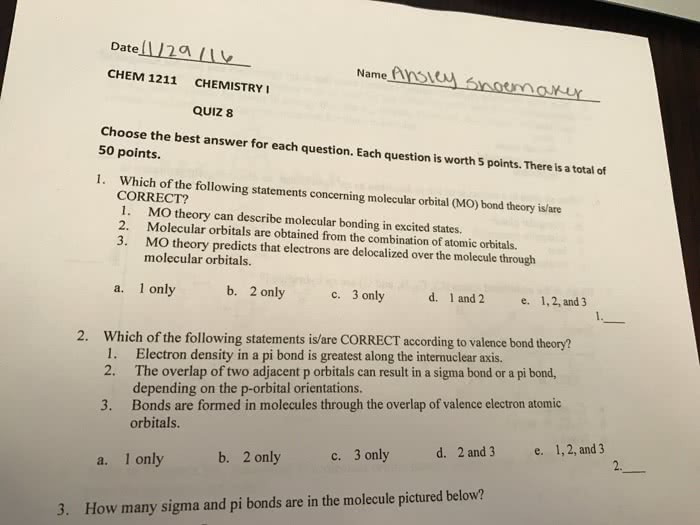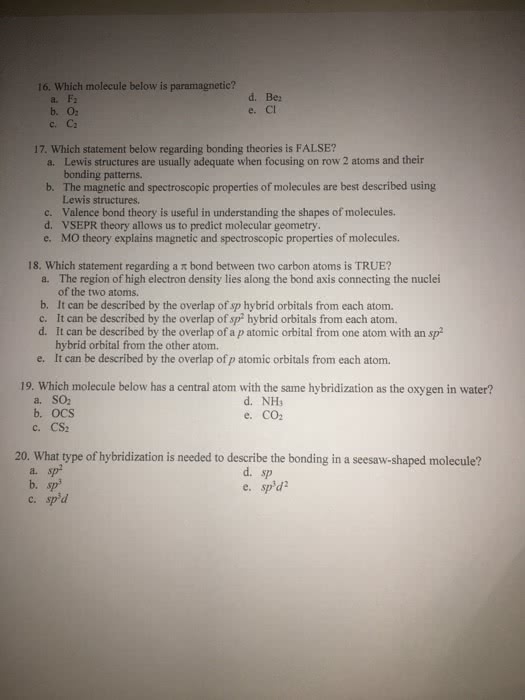CHEM 111 Lecture 30: CHEM111 Class 30
Document Summary
Both theories are based on the idea that molecular orbitals are created by the overlap of atomic orbitals. Valance bond theory electrons are either in a molecular orbital (bonding) or are localized on an atom (non-bonding) The overlap crates a sigma bond, from the 1s orbital and a 2p orbital. Overlap of valance atomic orbitals forms a bond. Works for simple molecules but not for anything more complicated, such as ch4. Lewis structure and vsepr predicts (correctly) that all bonds are equivalent and at 109. 5 degrees. Valance bond theory: orbitals hybridize: the 2s orbital and the 2p orbitals mix to for four equivalent sp3 hybrids. Sigma bonds with h for by overlap with the 1s orbital. To form a second bond between atoms, un-hybridized p orbitals overlap sideways. Electron density above and below the sigma bond forming a pi bond. There is no rotation about the double bond. It explains the geometric isomers cis (same side) and trans (opposite sides)




